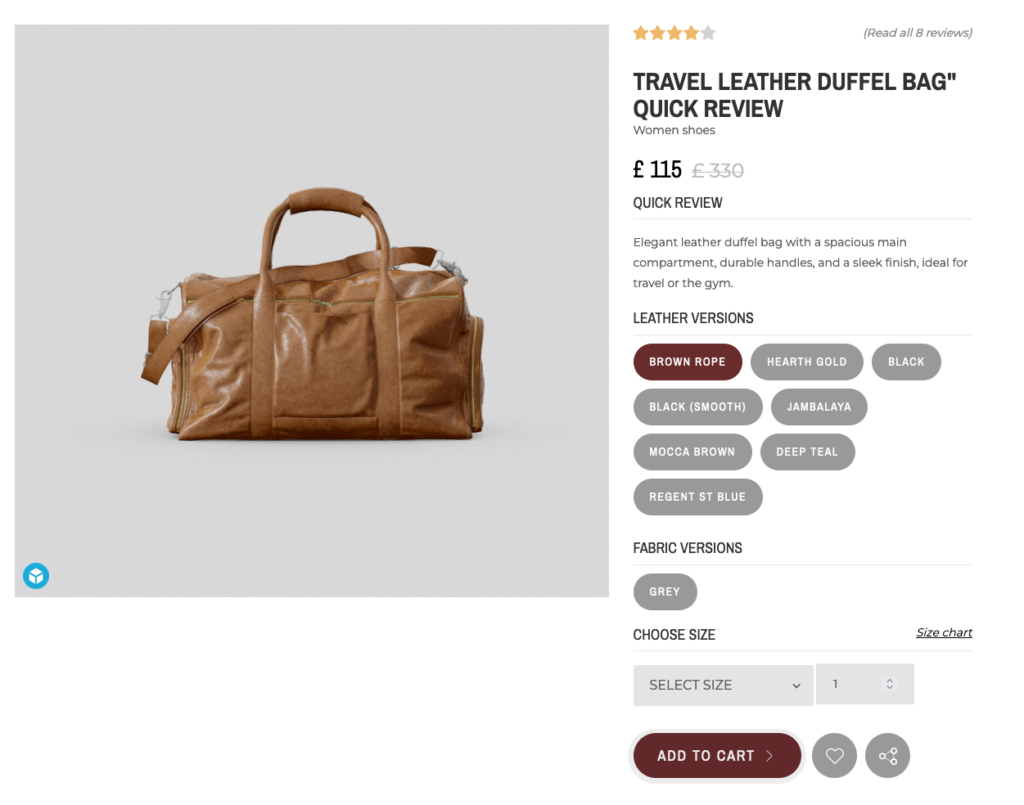The ability to display items in a dynamic and realistic way is a game changer the world of e-commerce and digital retail, which are rapidly evolving. This is especially true in the furniture industry, where the style the feel and look of a furniture item are important factors when making a buying decision. The 3D product configurator is a groundbreaking tool that has revolutionized how furniture buyers shop online and in stores.
Rise of 3D Product Configurators
A 3D product configurer is a computer program that allows the customer to interact with and experience a product three-dimensionally. Contrary to static images 3D product configurators 3D product configurator allows users to rotate, zoom in, and modify products in real-time. Furniture has become increasingly famous with this technology which provides a dynamic shopping experience.

Improve Customer Experience by Providing Online Furniture Configurators
A furniture configurator lets customers to have a more customized experience. The furniture configurator permits customers to look at the piece from all angles, choose their own colors as well as finishes, materials and even imagine how it will look in their living space. This interactive experience doesn’t just make shopping more enjoyable but aids customers to make educated buying decisions.
For example, Virtenzo’s 3-D furniture configurator allows users to alter their shopping experience through stunning 3D detail and customization options. This level interaction helps make the transition from online to physical shopping and makes customers feel more confident about their choices.
3D Interactive Furniture Configurators: Boosting Online Sales
3D product configurations can have an enormous impact on online sales. Interactive 3D visualisations have the potential to increase the conversion rate, and also reduce return rates. Customers are more likely purchase the product if they have a sufficient knowledge about it.
A 3D furniture configurator also allows retailers to showcase a vast range of product variations without the need to produce and photograph each one. This lets retailers showcase an array of variations without having to produce and photograph each one.
Immersive 3D Configurators The Future of Furniture Shoppers
As technology continues to develop and improve, the future of furniture shopping is sure to be shaped by 3D immersive configurators. These tools are expected to advance further, adding features such as virtual reality and augmented reality to improve shopping experience.
For example, customers could utilize AR to see furniture pieces in their actual living space on their mobile or via VR to go through a virtual showroom and see objects in a realistic environment. The shopping experience is enhanced with these new technologies.
Implementing 3D Product Configurators: A Guide for Furniture Makers
Implementing the use of a 3D configurator to help furniture manufacturers as well as retailers can be challenging. However, the benefits are superior to the challenges. This is a step-by method guide on how to begin:
Select the right platform: Select a 3D configurator platform that aligns with your business requirements and goals. Consider features like flexibility, customization, integration, and capacity.
Digitize your products Make high-quality 3D models of furniture items. It could be necessary to hire professionals in order to guarantee the accuracy.
Integrate the Configurator with your website. Collaborate with your website’s development team to seamlessly integrate the configurator with your online store. It must be mobile-friendly for users to access it from any device.
Increase the enjoyment of your VR or AR experience. You can add AR or VR to make it more immersive.
Marketing your new tool: Promote your 3D Configurator’s new features through your channels of marketing. You can also provide tutorials to your customers about how to utilize it.
The end of the article is:
3D configurators have revolutionized the furniture market. They provide customers with unparalleled experiences, and increase sales. These tools, which permit customers to personalize products and interact with them in real time in order to make the purchase process more pleasant and informative, bridge the gap that exists between online and retail shopping. The integration of AR/VR technology will continue to change the way we shop as technology continues to advance. Immersive shopping experiences are the new standard. Furniture makers and retailers have to adapt to this new technology in order to remain at the top of their game in this digital age.
